Create a space that delights
Ceiling lights form the very backbone of a functional and effective lighting scheme in living rooms. The living room is the heart of a home and a retreat from the chaos of the outside world. It’s a place where family members and friends gather and engage in a variety of activities—relaxing on the couch with a drink watching TV or reading, indulging in recreational activities like playing games or listening to music, celebrating family occasions like birthdays and anniversaries, and taking pleasure in in other interests, hobbies, or conversation. As a place to unwind, recharge, and let go of work-related issues, the living room needs to be livable, comfortable, and enjoyable. Living room lighting is not about just setting up the lighting effect because it’s necessary, but it should also help create a space that delights and accommodates all the events that are taking place.
Living room lighting design
From the welcoming atmosphere of sparkling illumination to the intimate ambiance of subdued glow, the right light can inspire a wide range of emotional, psychological and physiological responses in humans. Since the living room plays host to a wide variety of different activities, living room lighting must be adaptive and capable of creating the illusion of different spaces for different activities. Not surprisingly, living room lighting needs to be composed in layers in order to create a flexible and inviting space.
Basically, living room requires three layers of lighting, which are ambient, accent, and task. The ambient layer of lighting is used to create a backdrop for a pleasant stay in living rooms. It fills the living room with a soft level of overall, uniformly distributed light which ensures that the basic requirement for physical orientation and visual recognition within a space is met. The accent layer of lighting is used to create visual interest and reinforce design aesthetics. Accent lighting directs concentrated beams of light to highlight a room’s aesthetic features such as artwork and architectural details. The task layer of lighting provides a focused, localized pool of high intensity light to illuminate the activities that take place in the living room.
Not only utilitarian, ceiling lights create and complement thoughtful design
Ceiling light fixtures aesthetically modify the appearance of light sources and provide controlled distribution of emitted light to meet the varied needs of living room lighting. These fixtures are recessed into the ceiling, mounted to ceiling surfaces or suspended down below the ceiling surface. With a plethora of light distributions, beam angles and lumen packages, living room ceiling lights create the basis for the perfect composition of light that ensures ample light is delivered to where it’s needed while also creating a comfortable intimacy that embraces people and enhancing the overall look and mood of the room. Ceiling lights will also drive the aesthetic composition of the decor with their expressive form and intriguing look. They often double as distinctive sculptural works of art that tie in any design and style of the room, be it vintage, farmhouse, industrial, rustic, nautical, Scandinavian, transitional, modern or contemporary.
Types of ceiling lights
A wide variety of ceiling lights are available to help you achieve the desired blend of ambient, task and accent lighting in living rooms. Flush mount ceiling lights are low profile ambient light fixtures that are designed to blend in with the ceiling. These centerpieces hug the ceiling with a very minimal drop but provide an ample amount of diffused, general light that fills the entire volume of the space. Semi-flush mount ceiling lights generally hang less than a foot from the ceiling. These fixtures stand out for their ability to provide a decorative sentiment comparable to chandeliers and pendants without consuming steep vertical spaces. Recessed downlights provide perfect architectural integration as well as excellent visual comfort thanks to the recessed installation. The narrow beam allows design elements to be accented or tasks to be illuminated, while a wider flood beam is used for general lighting. Track lighting offers the ability to direct light exactly where needed, which lends enormous flexibility and diversity to a lighting design.
The most classic of all living room ceiling light fixtures is the chandelier. Chandeliers are showpieces of decorative ornamentation, intricate detailing and material beauty. Typically placed at the center of the living space directly over the main seating area, these elaborately designed fixtures fill the void between the ceiling and the living space to create a showstopping focal point and make grand statements. Perhaps the most versatile of all decorative light fixtures, pendant lights can be as artistic, exquisite and grand as a chandelier, or as understated and casual as a flush mount light. Creativity abounds with pendant lighting as these fixtures can be installed alone to create a commanding focal point on its own or hung in groups at varying heights for an artful display. The versatility of pendant lighting also lies in their optical designs. This family of ceiling fixtures are utilized to provide diffused ambient lighting, indirect lighting, and task lighting.
Lamp-based LED ceiling lights
LEDs have emerged as the overwhelming and even unanimous choice of light source for ceiling light fixtures. The cutting edge LED technology brings to interior lighting a range of benefits, which include vast energy savings, long operational life, solid state durability, and excellent controllability of the light output, light distribution and spectral composition. However, not all LED ceiling lights are created equal. Light sources that use incandescent or fluorescent technologies are glass-enveloped light bulbs. Traditional light fixture assemblies have been constructed around incandescent or fluorescent bulbs. These assemblies are known as lamp-based fixtures.
The lighting industry developed LED replacement bulbs to convert these fixture to LED systems. However, LED replacement bulbs are all too often compromised in light quality and system life as a result of inadequate design and engineering as well as aggressive cost control. Of all the concerns with LED replacement bulbs, flickering of light and poor color quality are most nasty. The drivers of LED light bulbs are generally designed as linear power supplies. These low cost driver circuits not only do not survive input overvoltage conditions, but often fail to provide effective load regulation critical to flicker-free lighting. When costs are cut not only the driver and thermal design suffers, the color quality of the light source is also sacrificed. The LEDs used in light bulbs are often deficient in longer wavelength light in the visible spectrum, which results in poor color reproduction.
LED ceiling lights with integrated LED light engines
LED ceiling lights are increasingly designed as integrated systems, although chandeliers and pendants that derive their design sensibilities from exposed lamps will continue their reliance on LED replacement bulbs, in particular the vintage-inspired LED filament lamps. An integrated LED luminaire builds its system around the LEDs, rather than the light bulbs. This approach allows to create optimal operating conditions for the LEDs. The fixture-as-heat-sink design improves thermal conduction and maximizes surface area of convective heat dissipation. The driver design can be more flexible with integrated systems, which means more robust driver circuits can be used to operate the LEDs.
The driver is arguably the most important component of an LED lighting system. The most crucial parameters such as flicker rate, circuit efficiency, dimming performance, and lifespan depend, almost exclusively, on the LED driver’s configuration and electrical performances. The design of an LED driver has a huge impact on its integration with controls for maximizing energy savings as well as enabling high value features. The dimming performance of the LED driver also deserves more attention as living room lighting often needs to adapt for varied activities.
Another great advantage of designing LED ceiling lights as integrated systems is the infinite variety of design possibilities. The fact that LEDs are very small in size allows to create compelling designs that exhibit sculpted artistry and geometric perfection.
Color characteristics
LED ceiling lights for living rooms should exercise tight control of glare so as to ensure maximum visual comfort. They must also deliver high quality light that allows the occupants to look in their best and appreciate a room’s aesthetic components. The light source of ceiling lights should be able to render colors accurately. LED sources with a minimum color rendering index (CRI) of 90 are considered excellent for color reproduction.
The color of light, which is described by correlated color temperature (CCT), should be seriously considered as it has profound biological and emotional impacts on human beings. After dark the color of light should be amber, orange or reddish (2700 K to 3000 K) so that the light spectrum does not deliver wavelengths that acutely suppress the hormone melatonin and lead to circadian disruption. During the day cooler light (3500 K to 4100 K) is desirable because it can help improve performance, vitality and concentration.
Living rooms are great places to implement human centric lighting (HCL) which imitates the changing color temperature and intensity of sunlight during the course of the day to support the health, wellbeing and performance of humans.

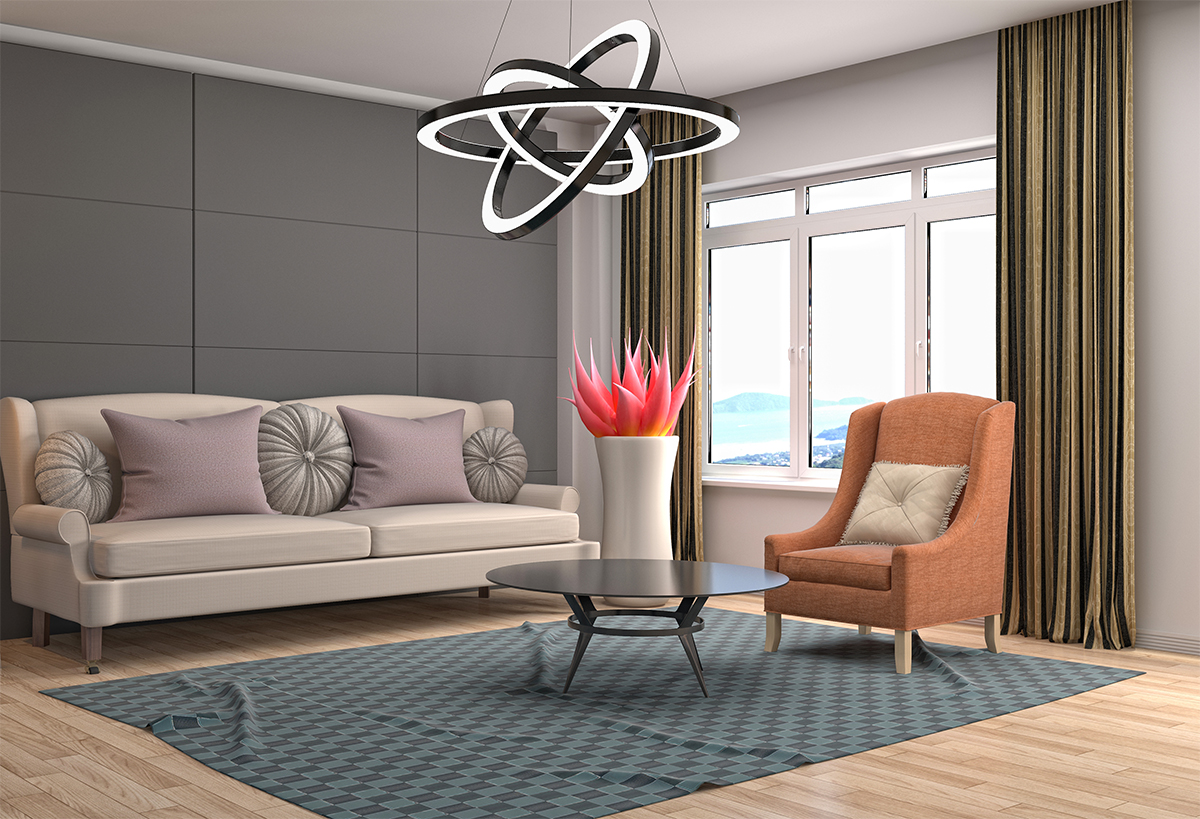
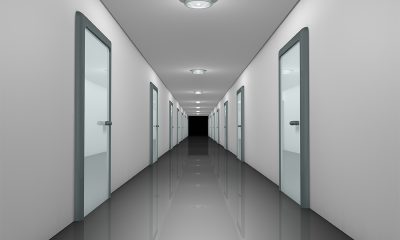
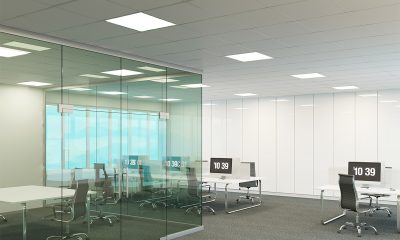

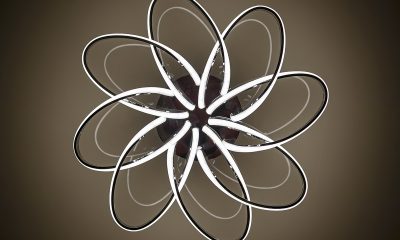
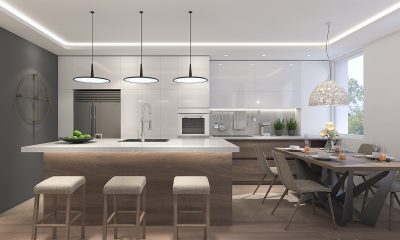


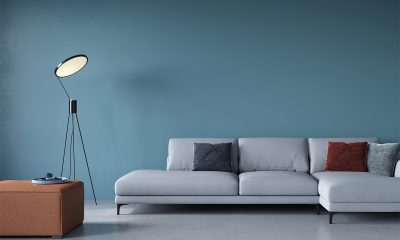
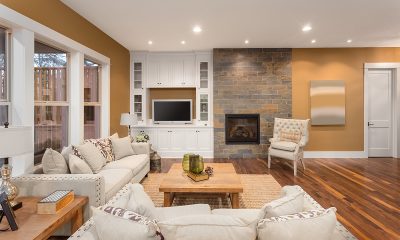
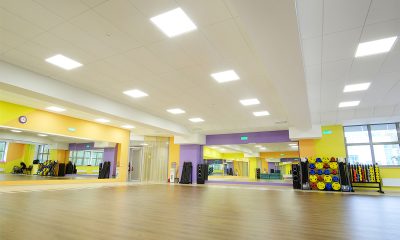

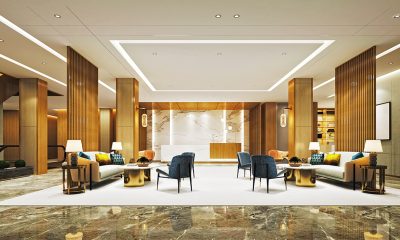





Loading...